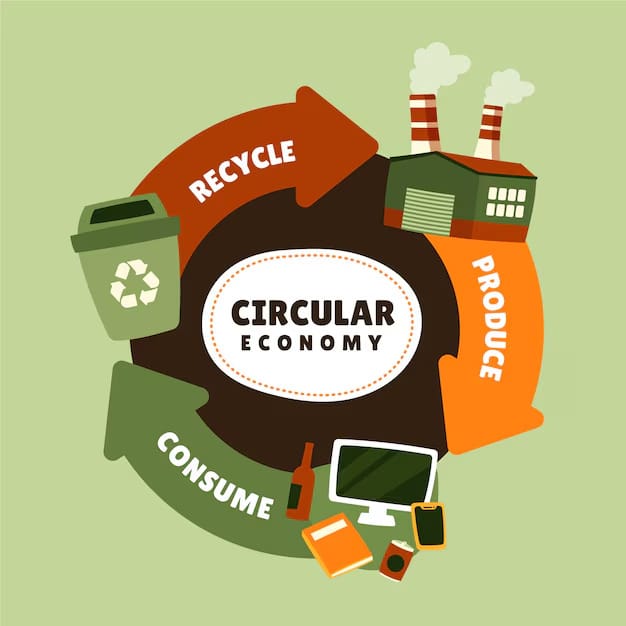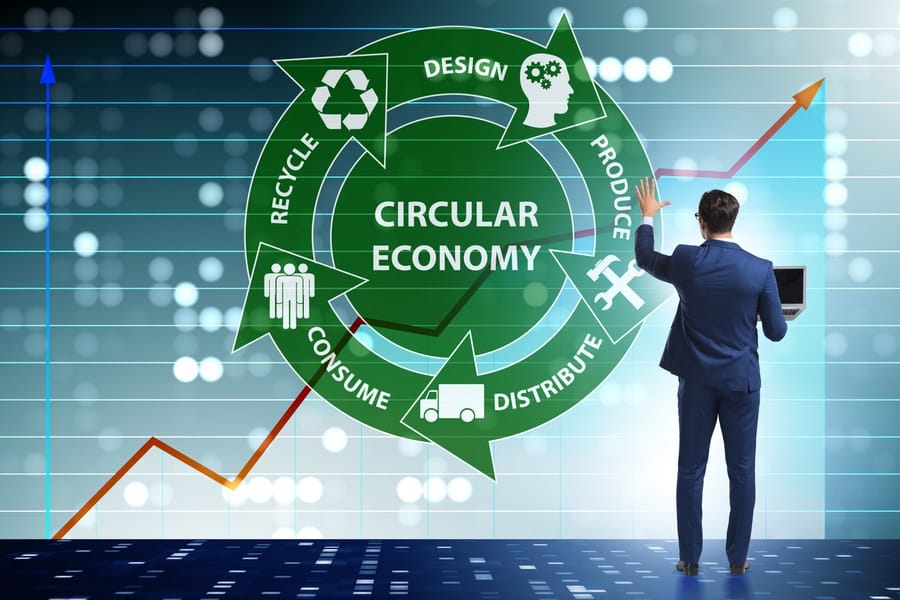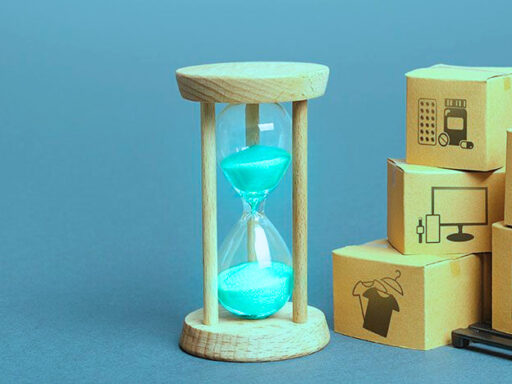Circular Economy Strategies have become a game-changing strategy in today’s quickly changing business environment, allowing organizations to attain sustainability while increasing profitability. Businesses may reduce their environmental impact and reap substantial financial rewards by concentrating on waste reduction, material reuse, and recycling. This article explores how using circular economy tactics might result in lower costs, increased productivity, creativity, and eventually market dominance.
Understanding Circular Economy Strategies
The goal of circular economy strategies is to maximize resource efficiency and eradicate waste via the redesign of company models, processes, and products. In contrast to the “take, make, dispose” strategy of the conventional linear economy, a circular economy places an emphasis on resource recycling, material reuse, and waste reduction. By reducing reliance on limited resources, this shift improves corporate resilience in addition to helping the environment. Businesses may reduce operating expenses, increase supply chain effectiveness, and adhere to strict environmental laws by implementing circular economy strategies. Businesses may increase consumer loyalty, generate long-term value, and obtain a competitive edge in their sector by using a circular model.
Creating long-lasting, repairable, and recyclable items is one of the main tenets of circular economy strategies. This entails employing robust materials, modular designs, and creative production methods that enable goods to be repurposed or remanufactured rather being thrown away. Companies can also use closed-loop systems, in which waste from one operation is used as raw material for another. Through the provision of take-back programs, reconditioned items, and responsible sourcing initiatives, companies such as Patagonia and IKEA have effectively incorporated circular strategies. Circular Economy Strategies will continue to influence the direction of sustainable company operations as more companies realize the economic and environmental advantages of circular practices.
Reducing Waste Through Circular Practices
Businesses may find and remove operational inefficiencies by putting circular economy principles into practice. For example, businesses may increase product lifespans and decrease the amount of trash produced by designing items for durability, repairability, and upgradeability. Using modular design principles also makes it simpler to disassemble and recycle components, which reduces waste even further.

Reusing Materials to Enhance Sustainability
Circular Economy Strategies promote material reuse in order to minimize waste and maximize resource efficiency. Many businesses are already using creative methods to recycle materials, which lessens their impact on the environment and improves the sustainability of their operations. Businesses may minimize their carbon footprint, save manufacturing costs, and help create a more sustainable future by recycling resources. Here are actual cases of businesses utilizing material reuse to successfully implement circular economy strategies.
Recycling as a Pillar of Circular Economy
One essential element of circular economy methods is recycling. Businesses may save manufacturing costs and the amount of raw resources extracted by turning waste materials into reusable forms. Recycling aluminum, for example, uses 95% less energy than making it from raw ore. Businesses may lower their environmental impact and save a significant amount of money by incorporating recycling procedures into their daily operations.
Cost Reduction Through Circular Strategies
Implementing circular economy techniques can result in considerable cost savings. Businesses may reduce material and disposal expenses by maximizing resource use and avoiding waste. For instance, because it uses less energy and materials, remanufacturing things might be more affordable than creating new ones. Additionally, companies may save warranty and service costs by designing goods for lifetime and reparability.

Improving Efficiency with Circular Economy Strategies
By promoting resource flow optimization, circular economy solutions increase operational efficiency. Implementing industrial symbiosis, for example, may save costs and improve resource efficiency by turning waste from one operation into an input for another. Additionally, businesses may increase efficiency by implementing digital technologies like the Internet of Things (IoT), which allow them to track and optimize resource utilization in real-time.
Driving Innovation, Profitability and Market Leadership
By forcing companies to reconsider conventional models, the move to circular economy initiatives encourages innovation. For instance, businesses are creating novel materials that are easier to recycle or biodegrade. In order to promote more sustainable consumption habits, companies are also investigating product-as-a-service models, in which clients pay for the service a product offers rather than possessing the object itself.
Businesses may become market leaders and increase profitability by successfully implementing circular economy concepts. Businesses may draw in eco-aware customers and boost sales by differentiating themselves through sustainable practices. Additionally, businesses may increase their profit margins by cutting expenses and boosting productivity. Businesses that take the lead in sustainability are also better equipped to handle the risks associated with resource shortages and adhere to changing legislation.
Case Study: Urban Mining in Belgium
Belgium’s Leuven urban mining project is a noteworthy illustration of circular economy strategies in operation. In order to recover reusable elements like bricks, metal, and wood, buildings are meticulously disassembled in this initiative. This method saves resources, cuts waste, and offers reasonably priced building supplies. Additionally, by giving immigrants and long-term jobless people employment possibilities, the effort promotes social sustainability. This example shows how circular economy tactics may have a cumulative positive impact on the environment, the economy, and society.
Comparison Table: Linear vs. Circular Economy
| Aspect | Linear Economy | Circular Economy |
|---|---|---|
| Resource Consumption | High; continuous extraction of raw materials | Low; materials are reused and recycled |
| Waste Generation | Significant; end-of-life products are discarded | Minimal; waste is designed out or repurposed |
| Product Lifecycle | Short; products are disposed of after use | Extended; products are designed for longevity |
| Environmental Impact | High; contributes to pollution and resource depletion | Low; reduces environmental footprint |
| Economic Model | One-time sales; focus on volume | Service-based; focus on value and sustainability |








